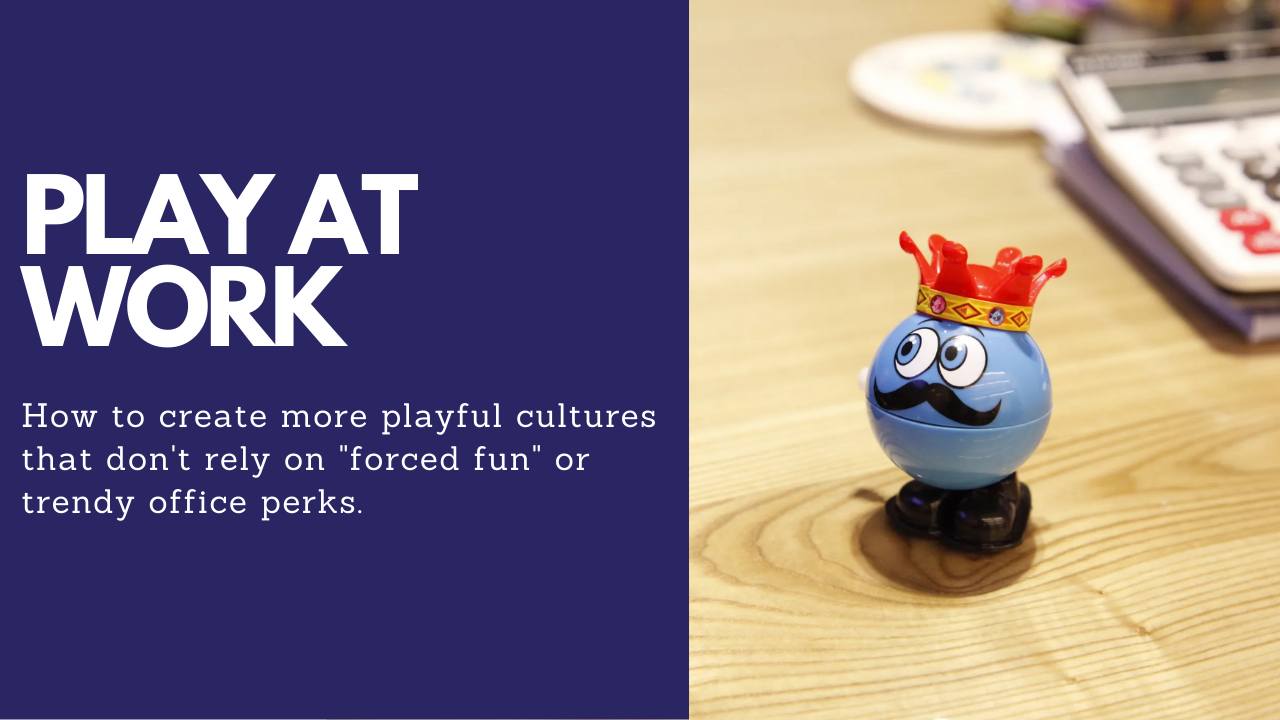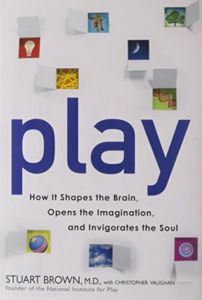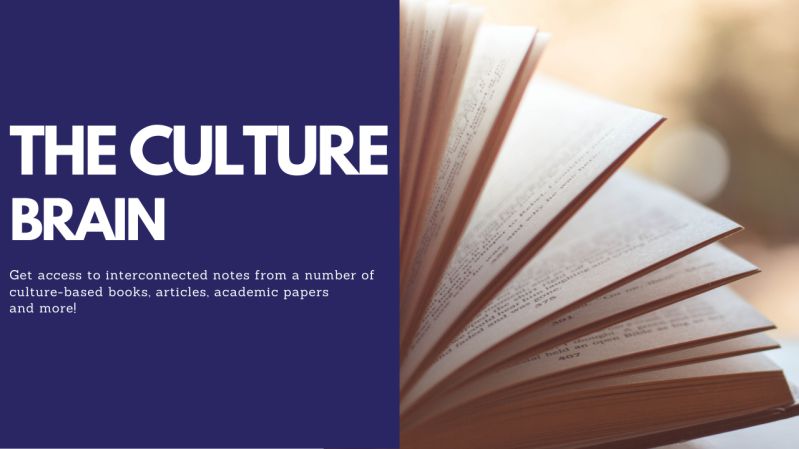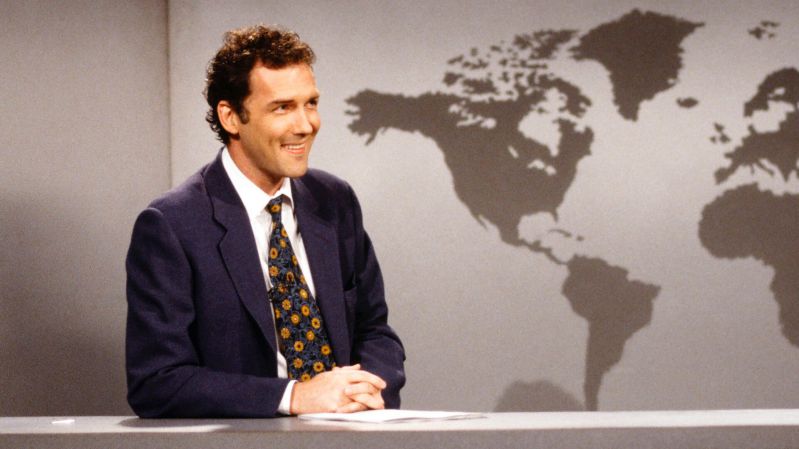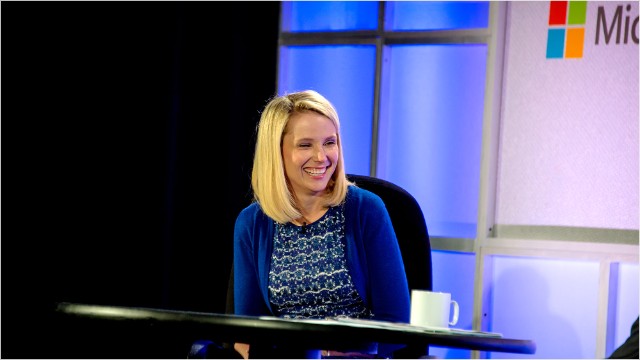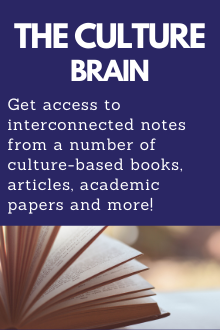Everything You Wanted To Know About Play At Work (But Were Afraid To Ask)
Over the last couple of decades, there has been more emphasis on play at work.
Instead of just working (all work and no play make Jack a dull boy), more organizations have started to embrace play in the workplace.
Organizations have come to see the benefits of creative play in the office, and that allowing for play at work has been beneficial.
With the rise of remote work due to Coronavirus, many organizations have been forced to figure out how to drive engagement and keep things light-hearted.
Many organizations have thrown many different things at the wall and seeing what sticks, with some interesting results.
Yet, creating more playful workplaces isn’t a guarantee that your organization will be magically better. In fact, we’ll examine how managed, or “forced fun”, can backfire on what you were hoping to get out of creating a more playful workplace.
Update: May 25th, 2022.I was recently featured in a BBC Worklife article on this topic: The death of ‘mandatory fun’ in the office.
I’ve done a few podcasts on the topic of play which you can find below:
- November 24 2020 – Transform Your Workplace Podcast: Fun at Work with Paul Lopushinsky
- November 9 2020 – People Managing People: How To Bring Creativity & Fun To Remote Teams (with Paul Lopushinsky from Playficient)
- August 27 2020 – SnackWalls E32 Paul Lopushinsky: Keeping It Playful
What this guide on play at work will discuss:
(click on title to jump to section)
- The Benefits Of More Playful Workplaces.
- The Eight Play Personalities.
- What Most Organizations Get Wrong When It Comes To Play At Work.
- How Your Workplace Can Make Use Of The Eight Play Personalities.
- Other Theories About Playfulness.
- Conclusion And Next Steps.
1. The Benefits Of More Playful Workplaces.
Let’s take a look at a few articles discussing the benefits of play in the workplace:
Teams of workers can benefit from play via increased trust, bonding and social interaction, sense of solidarity, and a decreased sense of hierarchy. Furthermore, findings suggest that play at work can benefit whole organizations by creating a friendlier work atmosphere, higher employee commitment to work, more flexible organization-wide decision making, and increased organizational creativity.
Playing Up the Benefits of Play at Work
Fun also impacted positively on how many days respondents took off work due to sickness or injury, with 62 per cent of employees who had had no sick days in the last three months having had fun at work.
Furthermore, 58 per cent of those who had not experienced workplace fun had been off sick for 11 or more days, compared to 42 per cent of those who had.
Research shows that workplace stress leads to an increase of almost 50% in voluntary turnover.
In sum, a positive workplace is more successful over time because it increases positive emotions and well-being.
Proof That Positive Work Cultures Are More Productive
What kind of impact does play have on work?
One thing I’ve seen organizations struggle with (and I’ve struggled to answer) is how can I measure the impacts that having a more fun workplace have?
Seeing the KPIs on creating playful workplaces is hard. Why?
It’s due to the indirect impact that play has on aspects like employee engagement or task performance.
Let’s dive into some research, from the excellent paper Play hard, work hard: Fun at work and job performance (Woolf 2014).
The key takeaways from this paper are that fun at work was positively and directly related to organizational citizenship behavior, and positevely and indirectly related to both task performance and creative performance.
To define organizational citizenship behavior (which sounds like a term some academic or overpaid consultant came up with), it is a person’s voluntary commitment within an organization that is not part of their contractual tasks. AKA, the friendships and bonds that form.
From getting to know their coworkers better, this has an indirect impact on how well they perform at tasks and creative.
It’s tough, however, to put an exact return on the impact of play, since it’s indirect, but it’s there! The research shows it.
Before we jump into what organizations can get wrong about allowing play at work, let’s look into the works of Dr. Stewart Brown, the eight play personalities, and why they’re important to understand the benefits of play in the workplace.
2. The Eight Play Personalities.
The concept of the eight play personalities comes from the work of Dr. Stewart Brown.
His book on play is a highly recommended read.
Play: How it Shapes the Brain, Opens the Imagination, and Invigorates the Soul
Here are the eight play personalities that Dr. Stuart Brown has labelled:
- The Joker.
- The Kinesthete.
- The Explorer.
- The Competitor.
- The Director.
- The Collector.
- The Artist/Creator.
- The Storyteller.
Before we get into more details about the eight play personalities, there are a few things you need to know.
- You can have multiple play personalities. This isn’t like being introverted or extroverted, where most people (unfortunately) like to pick one or the other. You may find that you have several things that you do that gravitate towards a number of the play personalities.
- Your play personality can change over the span of your life.Perhaps you were more of a competitor in your younger years, but as the years went by, you became more of a collector. Perhaps you had children and you moved away from collecting and back into competing or more into the joker category. Perhaps when you retire, you’ll find your play personality shifting.
- Various things that you do for play can fall under multiple categories. For example, I have done improv comedy since late 2014. That easily can fall under the joker play personality, or the storyteller play personality.
1. The Joker.
What is it?
This is the fun, the silly, and the nonsensical.
What falls under this play personality?
Think about baby talk, or the kid who becomes the prankster or the class clown. This play personality is most prominent in children.
This can come alive as parents, with the classic Dad jokes.
Doing activities like improv comedy, sketch comedy, or stand up comedy fall under this personality.
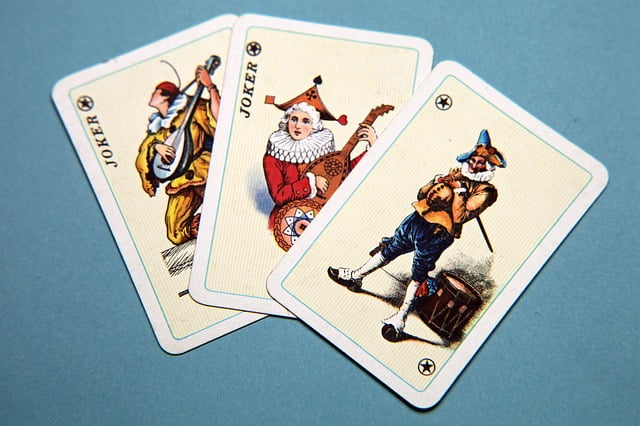
Source: Pixabay
2. The Kinesthete.
What is it?
Physical activity, but unlike the competitor personality (which we will get to), there is not emphasis on the winning component.
What falls under this play personality?
Running, bike riding, acro yoga (an activity I do), dancing, yoga, swimming, hiking, slacklining, hula-hooping.
3. The Explorer.
What is it?
This can be at many levels. This could be physical, mental, emotional, or spiritual.
What falls under this play personality?
Travelling or seeing new places, reading books, seeking out new music, art, stories, going to new attractions or places, meeting new people.
4. The Competitor.
What is it?
The goal is to win. This can be at a personal level, or in teams.
What falls under this play personality?
Sports, board games, video games. This is the play personality most organizations like to focus on (more on that later).
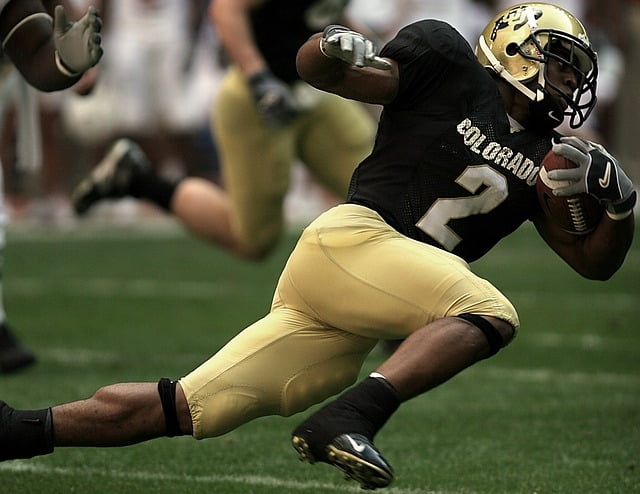
People love their sports. Source: Pixabay
5. The Director.
What is it?
Planning, organizing, directing.
Funny note on this one – I once ran a workshop on creating a more playful framework in the workplace, and one person couldn’t possibly see this as a form of play.
Yet, about a third of the room did. Like one person’s trash is another’s treasure, one person’s work is another person’s play.
What falls under this play personality?
Making movies, making music, organizing parties, cooking for large groups.
6. The Collector.
What is it?
Collecting! What else?
What falls under this play personality?
For me growing up, it was hockey cards. This could be anything really…maybe you like to collect coca-cola bottles from the 1950s, or beanie babies.
Fun fact about beanie babies: in the 90s when they were taking off and going for high prices, my Grandma bought them hoping they would one day be enough to pay for her grandkids university education. Needless to say, they never reached those highs.
7. The Artist/Creator.
What is it?
Designing, decorating, constructing.
What falls under this play personality?
Painting, sculpting, making music.

A fresh canvas. Source: Pixabay
8. The Storyteller.
What is it?
This play personality focuses on the imagination.
What falls under this play personality?
Reading, watching movies, poetry, playing tabletop games like Dungeons and Dragons.
3. What Most Organizations Get Wrong When It Comes To Play At Work.
There has been a rise in organizations allowing for more play at work.
They see the benefits of play at work. They’ve looked at organizations that have come before them (especially the FAANG organizations), and throw in a ping-pong table and some bean bag chairs in the office.
For most organizations, this is as about as far as they go, and this is what they get wrong.
If we look at the eight play personalities, we can see that most organizations, when it comes to integrating play at work, only focus on a couple of play personalities.
That list of the eight play personalities (as mentioned in the previous section) are as follows.
- The Joker.
- The Kinesthete.
- The Explorer.
- The Competitor.
- The Director.
- The Collector.
- The Artist/Creator.
- The Storyteller.
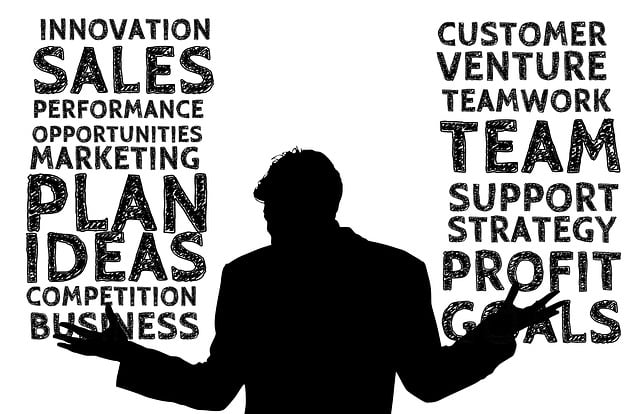
#crushit #hustle #whateverotherthingsgaryveesays Source: Pixabay
The most common play personality that organizations appeal to is the competitor personality.
It’s why so many trendy workplaces will have the ping-pong table, the foosball table or a Playstation, but offer few other options.
It makes sense, of course.
Organizations are, by their nature, competitive. They want to make money and beat out their competitors.
So, when it comes to integrating a play at work mentality, they mostly tend to just throw in the things that fall under the competitive play personality.
Unfortunately, this leaves out the other play personalities. As we all have different play personalities, it leaves a lot of people out of luck when it comes to their workplace offering something that appeals to their play personality.

Vancouver organizations like to offer things to those under the kinesthete play personality. Source: Pixabay
Living in Vancouver, the kinesthete personality is a frequent play personality that organizations cater to. A number of organizations offer things like in-office yoga.
Anything that puts emphasis on physical health? I totally approve.
However, the other play personalities can get lost in the shuffle, and as a result, the benefits of play in the workplace are unable to reach their full potential.
I worked at an office where a large portion of the employee culture revolved around the foosball table, the play personality of the competitor.
Which was great…for some people, but not for everyone.
Others who were not competitive by nature were frustrated. They would see others spending so much time at the foosball table and not enough time working, creating resentment.
Others wished there were more playful things that they could do at work. Some of these did spring up organically, and credit to the organization, they allowed for it.
However, there was much contention around the foosball table. In some ways, it seemed to create more problems than solving.
In a way, it lead to some conflict at work that wasn’t being addressed, but was quite the elephant in the room (I’ve written a post about the value of healthy conflict at work which you can check out here).
What Management and Leadership Tends To Get Wrong On This Subject.
While a bit of a cliche here, I’m going to use some well-known figures in the tech industry as examples to talk about this aspect further.
For plenty at the top, those who love to put in 100+ hour at work, it can be fun for them.
As mentioned earlier, what is work for some is play for another.
For a number of leaders, they can see their work like this. It’s why they put so much time into their work.
However, that leads to frustration with employees, those that they feel aren’t putting in their time when they’re “only” working 40 hours a week. That they’re not committed.
This is where you get into this gap in between upper management and most employees.
It’s where you start to get into that cult of workaholics.
These are funny words of the late, great comedian Norm MacDonald.
You also get situations like the 996 work schedule, which is 9am-9pm, six days a week.
These are the words of Alibaba founder Jack Ma.
If Jack wants to work a 996 schedule, that’s his choice. Not everyone needs to do the same, despite what he thinks. That doesn’t mean others are lazy.
Speaking of Jack Ma, here is dancing to Michael Jackson at one of Alibaba’s annual conferences.
I love this last quote from one of Google’s first employees, Marissa Mayer, as it really helps demonstrate this cult of workaholism.
Very, VERY few people are wired this way.
It does lead to this big gap that can exist in leadership and employees.
Just because people “only” work 40 hours a week, that doesn’t mean they are lazy. We’re all wired differently.
Don’t force fun in the office.
A very important point that I want to make is that management play and fun can become forced fun, which ends up being no fun for anybody. Want to learn more about the perils of forced fun? Check out our post on the subject in-depth:
Forced Fun Is No Fun – So Why Do Organizations Keep It Up?
That said, I do want to discuss some of this here as well.
From Plester, B. A., Cooper-Thomas, H. & Winquist, J. (2015). The fun paradox:
Only one fifth of our respondents in the survey study claimed to enjoy this category of fun.
Again, we found further examples (presented below) in our interview data set that suggested some enjoyment of ‘managed fun’ but also paradoxically suggested some antipathy and resistance to this form of fun.
What was also difficult was that some participants described a dissonant state where although they felt some appreciation for some of the managed fun they simultaneously experienced cynicism and dislike.
The entire paper is an excellent read and gives insight into how the employee tends to get overlooked when it comes to the notion of managed or forced fun, as opposed to organic or task fun (related to the tasks one does).
In fact, one of the respondents in the survey ended up leaving his job due to having constant pressure to be present and participating in “managed fun” events.
Speaking of “managed fun” events, here is something I can across from the paper Mandatory Fun: Consent, Gamification and the Impact of Games at Work.
By focusing on the gamification process, we highlight the paradox of ‘mandatory fun,’ the tension between the traditional notion of games, with their promise of fun at work, and the managerially-imposed aspect of these games.
When managers provide a game that is built into the work experience, they are essentially imposing that game on the employees, as opposed to permitting the playing of a game that has been developed by the employees themselves (c.f., Burawoy, 1979).
The notion of “mandatory” fun is fundamentally about the desire to make work more pleasant for people or to distract them from the unpleasant and taxing aspects of the work (Fleming & Sturdy, 2010), yet it also requires that managers decide what it is that will be pleasurable to the employees.
Like 99% of issues that arise in the workplace, there is a gap in between how management and executives view things, and how employees view things. This mandated or forced fun can easily fall under that category.
Here are some other finding when doing research on the topic that I thought would be worth sharing here:
Is It Still Considered ‘Team Building’ If They Force You To Participate?
Team-building activities are only useful when everybody who participates wants to be there. There’s no such things as effective, forced team-building!
The good news is that your department is already chugging along as a team. You don’t need “fake fun” activities to help you get there.
Here is another one I found, this comes before the pandemic, so note the point about remote working.
If organisations were genuinely interested in making their employees happy at work, then they would probably give up on the corporate clowning and look at some much more downbeat interventions. A simple step would be allowing employees to work from home at least some of the time.
One experimental study found employee satisfaction and productivity shot up when people were allowed to work from home.
A second simple step would be to stop interrupting workers with all sorts of pointless demands such as long emails, bureaucratic forms and compulsory happiness initiatives.
A study by researchers at Harvard Business School found workers felt most satisfied on days at work when they were just able to consistently focus on an important piece of work and make some meaningful progress on it.
A noticeable benefit of the rise of remote work is the increase in organic fun and decrease in managed fun.
Due to COVID, a number of organizations have had to get really creative when it comes to keeping a fun atmosphere.
When they can’t rely on their ping-pong tables, beer Fridays, or “kindergarten offices”, they’ve had to get creative.
The creativity came from doing a much better job of listening to employees.
This is due to the fact that management has given employees more of a choice in things they can suggest for fun, and are more open to.
Of course, I wholeheartedly agree 100% in this approach, it’s just a shame that it took a global pandemic to see more of a rise in organic fun as opposed to managed fun.
To end this section off, here’s a classic clip from Office Space.
4. How Your Workplace Can Make Use Of The Eight Play Personalities.
Again, the list of the eight play personalities are as follows:
- The Joker.
- The Kinesthete.
- The Explorer.
- The Competitor.
- The Director.
- The Collector.
- The Artist/Creator.
- The Storyteller.
As mentioned in the previous section, most organizations cater to the competitor personality, but the other play personlaites tend to be ignored.
I’m going to give some suggestions on what your organization can do to integrate each of the play personalities into the workplace, which will allow you to get the most out of play at work.

Have you noticed this fellow popping up in a bunch of stock photos? Source: Pixabay
1. The Joker.
What are some things that you can do in the workplace?
You can try adding some improv games into the office for team-building exercises.
Here is a list of five improv games you can play for some team-building.
To note, a lot of people have anxiety about doing improv, and that’s totally understandable. They may like the idea of it, but performing it can be terrifying.
In that case, perhaps take your team out to an improv show. A lot of improv troupes can be hired to come perform for your organization.
Go to a standup show, or a sketch comedy show. In the wake of Coronavirus, I recommend making use of something like Netflix Party to watch a comedy special together.
Have a take your kids to work day. Kids, by nature, tend to fall into the joker category (which unfortunately gets yanked out of them as they get older), so having time to bring them in can be a good idea.
The day may not be “productive”, but that playful energy of the joker will linger, resulting in more well-being around the office.
2. The Kinesthete.
What are some things that you can do in the workplace?
Have group walks or runs. Get some in-office yoga going (this is a common one in Vancouver). Have a zoom yoga or meditation class, whether employee lead or you hire someone for it.
If you’re a dog friendly office, arrange times for a big group dog walk.
Is it a nice day out? Go toss around a frisbee. Play catch.
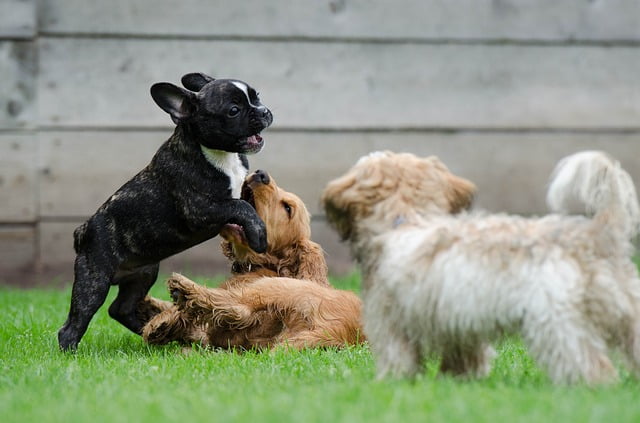
Yes, they can be a distraction, but they’re so much fun. Source: Pixabay
3. The Explorer.
What are some things that you can do in the workplace?
Did a nearby art gallery open up to the workplace? Take a few hours to go check it out.
Working remote? Plenty of well-known galleries have virtual tours that you can do online together as a team.
A common way of addressing this play personality is having employees host lunch and learns. I’ve worked with organizations that do this and it’s worked really well for them.
These are easy to do remote as well – have people tune in with their lunch on hand (heck, even order lunch for your staff if you want), and enjoy a lunch and learn from an employee.
Some lunch and learn ideas: Someone can do a lunch and learn about some of their travels. They could do a lunch and learn on something that they’re really passionate about. They can do a lunch and learn on their culture.
4. The Competitor.
What are some things that you can do in the workplace?
As we have gone over earlier, this is the play personality that most organizations gravitate towards.
Which, to mention again, makes sense, as organizations are by their nature, competitive.
If you don’t have a ping-pong table, or a foosball table, or a Playstation, then by all means get one for the office.
Remote working? I’m sure you’ve played Jackbox during the quarantine – enjoy some sessions with your team. Or play any form of an online multiplayer game. There are sites that allow you to play free board games online.
However, as it should be clear from this post, don’t let it be the only thing that defines your play in the workplace.
5. The Director.
What are some things that you can do in the workplace?
Allow for employees to plan for events in the office, whether that is gatherings, parties, or potlucks. Everybody loves a potluck (well, mostly everyone).
Just be careful that it doesn’t turn into the party planning committee from The Office.
6. The Collector.
What are some things that you can do in the workplace?
Again, this can be something that is addressed with the lunch and learn.
An employee can do a lunch and learn about something they collect. That could be about hockey cards (as I did back in elementary school) to collecting the buttons from the Polar Bear Swim (a yearly event in Vancouver, someone collected these in one of my previous workshops I ran).
Have a photo wall. A number of organizations will have a growing collection of photos of the workplace. No, I’m not just talking about staff portrait photos. These can be from fun times and gatherings throughout the organization.
7. The Artist/Creator.
What are some things that you can do in the workplace?
I hate to say the term “arts and crafts” because I have flashbacks to elementary school (painting was not my speciality, music was), but giving a space for employees to work or share their art will be beneficial to their work.
I’ve known a few organizations that have a garden, which is a great way to give something to the artist/creator.
You can have an acoustic guitar or a keyboard around the office for the musically-inclined.
Hackathons are another way of appeasing the play personality of the artist.
Give developers some time to work on problems that they feel passionate about. You never know what may come out of it.
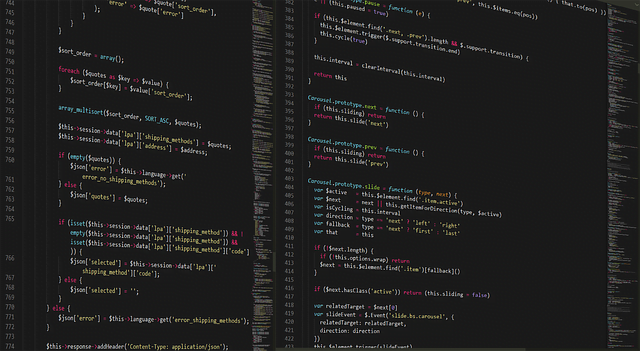
Fun fact: Gmail came about from a Google hackathon. Source: Pixabay
8. The Storyteller.
What are some things that you can do in the workplace?
You can have an office book club.
Is there a movie that the team wants to go check out? Set up a time for a movie day.
You can also have an office Dungeons and Dragons group.
These are just a few suggestions of things you can do to take advantage of the different play personalities in your workplace.
The best thing that you can do is asking around the office and finding what kind of things that employees gravitate towards to in regards to play. This should be an important part of your employee experience design.
We’ve written a guide for employee experience design that you can find here.
You can make identification of an employee’s play personalities part of the employee onboarding process.
This can happen as early as the interview process (or at least the later stages when you have a better idea in mind). You can find out what kind of things that they do for fun, and the whys behind it.
We’ve written a guide for the employee onboarding process that you can find here.
12 Employee Onboarding Ideas Your Organization Can Use Right Now
5. Other Theories About Playfulness.
While the work of Stuart Brown is great for understanding play, there are other ones to make note of.
One of those being the work of Rene Proyer.
Rene is a German psychologist who focuses on adult playfulness. He has studied the benefits of playfulness in adults. This includes the association of play with more creativity and well-being.
Rene has helped with the development of the Adult Playfulness Scale (APS). This is a 32-item questionnaire to help determine your dimension of playfulness from four dimensions. To note, the creation of the APS came from others:
The Adult Playfulness Scale: An Initial Assessment
Much of the information about the APS lies behind academic paywalls. Thanks to our good friend ChatGPT, I was able to get more information.
The APS measures four dimensions of playfulness:
1. Other-directed playfulness: This dimension of playfulness is an individual’s tendency to engage in playful behavior with others. This includes joking around or imaginative play.
2. Light-hearted playfulness: This dimension of playfulness is an individual’s tendency to approach life in a light-hearted manner.
3. Intellectual playfulness: This dimension of playfulness is an individual’s tendency to play that involves intellectual challenges. Puzzle-solving or creative problem-solving falls under this dimension.
4. Whimsical playfulness: This dimension of playfulness is an individual’s tendency to play that is imaginative. Think daydreaming.
There are 32 items on the APS questionaire
The rating for each item is 1-5, 1 is strongly diagree, 5, is strongly agree.
Thanks again to ChatGPT, I found the questions:
1. I often enjoy playing games with others.
2. I enjoy practical jokes and other forms of spontaneous humor.
3. I like to tease and joke around with people.
4. I often find myself making others laugh or amusing them.
5. I enjoy engaging in imaginative play activities.
6. I enjoy telling stories or creating narratives.
7. I like to daydream and fantasize.
8. I enjoy using my imagination to solve problems or be creative.
9. I like to create things, such as art or crafts.
10. I enjoy playing with children.
11. I like to engage in playful banter with others.
12. I often use humor to cope with stress or difficult situations.
13. I enjoy watching comedies and other humorous forms of entertainment.
14. I like to try new and different things, just for the fun of it.
15. I enjoy playing pranks on others.
16. I like to engage in imaginative or creative activities, such as writing or drawing.
17. I enjoy engaging in imaginative or fantasy play.
18. I like to play games that require intellectual or mental effort.
19. I often come up with creative solutions to problems.
20. I enjoy engaging in playful activities that involve physical movement or exercise.
21. I enjoy engaging in activities that involve competition or winning.
22. I like to play practical jokes on others.
23. I enjoy using humor to lighten the mood in serious situations.
24. I often find myself being playful, even in situations where it may not be appropriate.
25. I enjoy playing with animals.
26. I like to engage in activities that involve exploring and discovering new things.
27. I enjoy engaging in playful activities that involve risk-taking or excitement.
28. I enjoy engaging in activities that involve intellectual challenges.
29. I like to make up funny or silly stories.
30. I enjoy engaging in playful activities that involve pretending or make-believe.
31. I often find myself being silly or goofy around others.
32. I enjoy engaging in playful activities that involve creativity or imagination.
I was unable to find how to rank items to determine your dimension of playfulness. Still, if you’re interested, it’s something to look into further. Both for yourself and your organization.
Here’s a 50-Minute talk that Rene Proyer did on the subject:
6. Conclusion and next steps:
In this post, we have covered the following:
(you can click the below to jump back to that section)
- The benefits of play in the workplace.
- The eight play personalities.
- What most organizations get wrong when it comes to play at work.
- How your workplace can make use of the eight play personalities to maximize the benefits of play in the workplace.
- Other Theories About Playfulness.
What are some things you can do right now to get more benefits out of play in the workplace?
Make a list of what your organization currently does for play at work.
Do you have a range of things that cover the play personalities?
Are you an organization that just caters to the competitive play personality with your ping-pong table?
Do you even allow for anything in regards to play at work?
Identifying what you currently have, and what your shortcomings are will give you an idea of where you need to look into.
Find out what employees gravitate towards to in regards to play.
If you’re a small organization, you can go around and find what kind of things people like to do for fun.
For a larger organization, you can send out feedback forms or surveys to try to get some ideas.
From there, you can begin to identify which play personalities are not being covered within your organization.
Working with employees to come up with activities to cover the play personalities.
The suggestions I gave earlier on what you can do in the workplace for each play personality is a starting point. See what ideas employees have. Find things that make sense and fit in with your workplace, and begin to integrate them.
One of our core offerings at Playficient is helping organizations create a more playful workplace.
You can read more about that here.
We also have coaching offerings to the individual looking for a more playful life.
I’ve done a couple of podcasts on the topic of play which you can find below:
- SnackWalls E32 Paul Lopushinsky: Keeping It Playful
- People Managing People: How To Bring Creativity & Fun To Remote Teams (with Paul Lopushinsky from Playficient)

